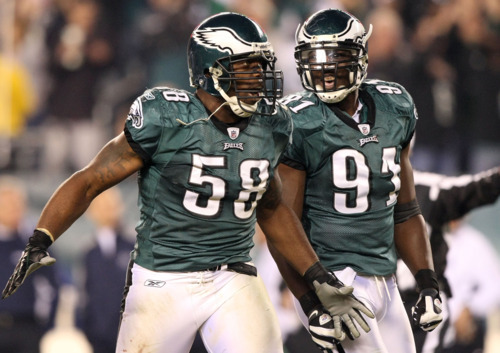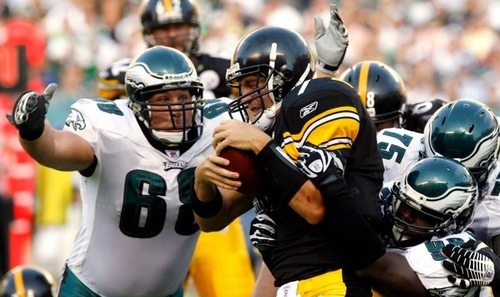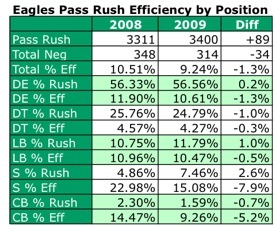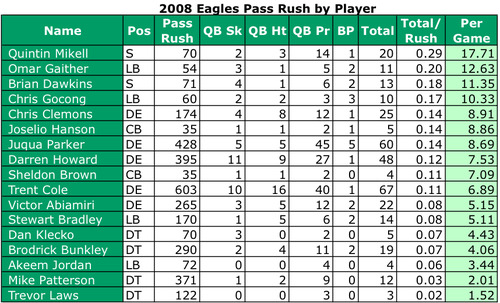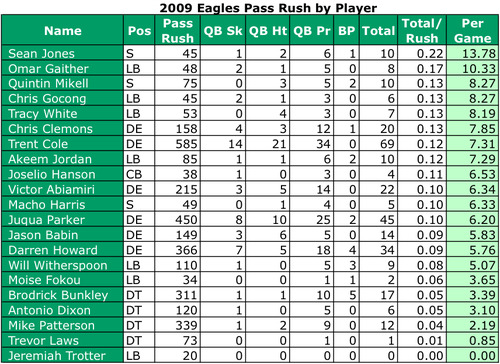As Friday night ended, the Eagles welcomed two more players to Philly, each giving us a another glimpse into the future under Chip Kelly. First was Stanford tight end Zach Ertz, a versatile and athletic weapon for the new offense. A Stanford alum friend sent me a text right after the selection that just said, "Zach Ertz is a beastttttt." He lined up all over the formation last year and caught 68 passes, including 11 for 106 yards and a touchdown against Oregon. Kelly is clearly moving in the direction of a multi-tight end offense and this pick fits perfectly into that mold. In his press conference, Kelly talked about the match-up problems versatile tight ends can create:
"We are going to go three tight ends in a game. Now, if they go three linebackers, we spread them out and if they go DB's, we smash you. So, pick your poison. Simple game, isn't it? You guys thought coaching was hard. They bring little guys in, you run the ball. They bring big guys in, you throw the ball."
If they really are going to play a lot with three tight ends, I can see a lot of logic behind the pick. However, I wonder what this means long term for Brent Celek. James Casey was also brought in this offseason, but he's a smaller H-Back-type. Ertz, on the other hand, is basically a taller, faster version of Celek (many comparisons have been made to Jason Witten). The Eagles' incumbent starter only just turned 28, although Celek has taken a lot of big hits over the last six years and his salary from 2014-2016 becomes completely pay-as-you-go. He has no more guaranteed money after this year and can be cut or traded without cap penalty. If Ertz progresses quickly, I expect Celek will be playing for someone else before long.
With their third round pick, the Eagles selected 6'2", 309 lb LSU defensive tackle Bennie Logan. After the pick, Kelly and Howie Roseman talked about how important it is that Logan has the versatility to collapse the pocket from the middle, as opposed to just being a run stopper. However, the NFL comparison CBS Sports makes for Logan may be instructive:
Compares to: Brodrick Bunkley, DT, New Orleans Saints -- Just as it was for Bunkley when leaving Florida State seven years ago, the talent is in Logan to develop into a legitimate NFL starter and perhaps even turn into a standout. To do so, however, he'll need to develop a greater array of pass rush moves. Otherwise, his strength and effort should be enough to help him carve out a niche as a solid run-stuffing presence in the middle.
Bunkley was a massive man and unmovable force in the run game. However, he never did develop into that pass rush threat that the Eagles hoped for. Still, even if Logan remains limited, he seems like a great candidate to play the 5-technique defensive end and -- if he can add a few more pounds -- move inside to replace Isaac Sopoaga at nose tackle.
As for Saturday's final rounds, my main desire is for the team to load up on defense. Sure, I'd like a speedy running back/returner and more offensive line depth is never a bad thing. But overall the offense seems fairly set. The Eagles collapsed in the last few years largely because they didn't have talent on defense. They're not likely to find any stars in the later rounds, but competition is desperately needed at cornerback and safety. Outside linebackers who can help with the 3-4 transition are important too, as are more big bodies if the right one falls.
Photo from Getty.

